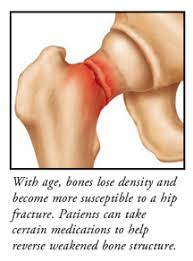
Diagnosed with Cancer? Your two greatest challenges are understanding cancer and understanding possible side effects from chemo and radiation. Knowledge is Power!
Learn about conventional, complementary, and integrative therapies.
Dealing with treatment side effects? Learn about evidence-based therapies to alleviate your symptoms.
Click the orange button to the right to learn more.
- You are here:
- Home »
- Blog »
- side effects ID and prevention »
- Avascular Necrosis Breakthrough
Avascular Necrosis Breakthrough

Does the article linked below signal an avascular necrosis breakthrough? I believe so. Let me explain. I am a long-term cancer survivor. I developed avascular necrosis fully 20 years after the administration of high-dose steroids.
I chose not to undergo conventional therapies to try to fix my AVN because:
- according to the study linked below, the success rates of core decompression and total hip replacement aren’t great and
- I have experienced reduced pain and increase range of motion through weekly Acupuncture treatments-
What is avascular necrosis?
Is the treatment outlined below an avascular necrosis breakthrough? That’s difficult to say without more history of treatment. What I do know is that this therapy offers real hope for what I know is a painful late stage side effect of high dose steroid use.
Are you a cancer survivor struggling with AVN? What type is cancer? When did you undergo steroid use? If you’d like to learn more about evidence-based non-conventional cancer therapies send me an email-
David.PeopleBeatingCancer@gmail.com
Thanks,
David Emerson
- Cancer Survivor
- Cancer Coach
- Director PeopleBeatingCancer
New Technique of Reverse Bone Grafting With Core Decompression and Enriching With Regenerative Medicine Techniques for Grade 2 and Grade 3 Avascular Necrosis of Both Hips
“Early avascular necrosis (AVN) of the hip poses a significant clinical challenge, requiring prompt recognition and intervention to mitigate long-term complications. A case report describing a 30-year-old man with bilateral hip AVN is presented here.
In addition to reverse bone grafting and core decompression of both hips-
- the patient had platelet-rich plasma (PRP) infiltration in the right hip and
- bone marrow aspirate concentrate (BMAC) infiltration in the left hip.
This method attempted to stop the disease’s development and promote hip regeneration in both. Significant pain reduction and postoperative functional gains in both hips are seen in this instance…
While avascular necrosis (AVN) predominantly afflicts elderly individuals and is frequently associated with chronic medical conditions and long-term corticosteroid use, it can also affect younger individuals. In the younger population, AVN is frequently connected to trauma, excessive consumption of alcohol, and certain illnesses such as sickle cell disease or systemic lupus erythematosus. It has also been connected to COVID-19 more recently…
In this case, the patient underwent reverse bone grafting, a procedure that involves replacing necrotic bone in the same location with healthy bone. This was combined with core decompression for both hips. Additionally, to explore the potential for regeneration, bone marrow aspirate concentrate (BMAC) and platelet-rich plasma (PRP) were injected into the left hip, while only PRP was administered into the right hip. The goals of the combined orthopedic and regenerative medicine strategy were to reduce hip discomfort, slow the course of AVN, and encourage hip tissue regeneration…
Since the hips are essential for ambulation and daily activities, the ailment has a considerable negative impact on the patient’s quality of life. Maintaining hip function while averting long-term additional decline is difficult when controlling AVN in young adults. AVN is often treated with a focus on reducing discomfort, regaining joint function, and stopping the disease’s development.
The primary choices have been surgical operations such as joint replacement and core decompression.
Nevertheless, studies have indicated that the overall clinical success rate of core decompression is just 63.5%, and the success rate of hip salvage or total hip replacement (THR) surgery that follows is only around 33% [8]. Because of this, the procedure’s use has been contested…
Post-operatively, the patient had significant pain relief the next day of the procedure, and the hip range of movements was significantly improved. Immediate post-operative movements were: flexion – 70 degrees, external rotation – 35 degrees, internal rotation – 30 degrees, abduction – 40 degrees, and adduction – 30 degrees. The patient was started on anti-osteoporotic treatment in the form of alendronate, calcium, and vitamin D3 supplements to aid in bone healing. A post-operative radiograph was done and was satisfactory as elicited in Figure 10, and a two-month post-operative X-ray was done as shown in Figure 11. The patient had a pain relief of approximately 90% at the follow-up visit after two months…

